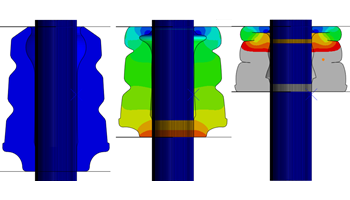
08 Sep Abaqus nonlinear performance
The world is nonlinear: 8 benefits of using Abaqus
Benefit 1: Nonlinear Performance
When Abaqus was released in 1978, its basic element formulations were implemented using fully nonlinear equations. Still today, this core foundation enables the developers of Abaqus to create much more realistic FEA aspects to simulate virtually any form of complex real-world physics.
Other solvers, on the opposite, started with linear assumptions. As a matter of fact, due to limitations in computing power, linear FE models were the industry standard in the 70’s and 80’s. In the 90’s, as CPUs and RAM became cheaper, this led to a shift in terms of “required realism”. Today, with powerful servers, cloud computing or even laptops, nonlinear analyses are the standard, as computing power is no longer a main issue from a real user perspective.
Nevertheless, nonlinear FE models can be computationally expensive and time consuming. In this respect, the main benefit of the Abaqus code, which was originally conceived as a nonlinear solver, is that it will run any nonlinear simulation faster and will converge to more realistic results than other codes.
Abaqus benefits
Abaqus Benefit 1: Abaqus nonlinear performance
Abaqus Benefit 2: Abaqus contact modeling
Abaqus Benefit 3: Abaqus efficient substructures
Abaqus Benefit 4: Abaqus multiphysics
Abaqus Benefit 5: Abaqus large deformation
Abaqus Benefit 6: Abaqus fracture and failure
Abaqus Benefit 7: Abaqus development & support
Interested to experience the Abaqus nonlinear performance?
Apply now for the Abaqus evaluation package and evaluate the Abaqus nonlinear capabilities.


